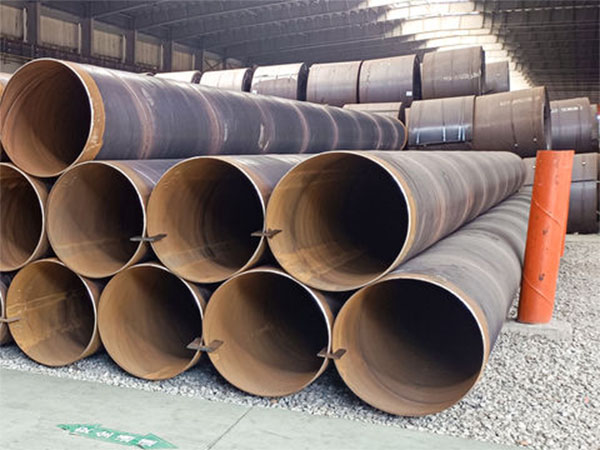Carbon steel welded pipes are mainly produced by bending carbon steel strips or steel plates into tubular shapes through various forming processes and then manufacturing them using different welding techniques. Their types mainly include ERW, LSAW, and SSAW. These three processes each have their own advantages and manufacturing features, and are widely used in different scenarios due to the different characteristics of their structures.

1.
ERW steel pipe
Manufacturing features: The steel pipe is formed by heating and melting the edge of the steel strip with high-frequency current and then performing pressure welding under the action of the extrusion roller. No additional welding wire is required. The weld surface is smooth and the dimensional accuracy is high. According to their different frequencies, they are further classified into low-frequency welding, medium-frequency welding, ultra-medium-frequency welding and high-frequency welding. High-frequency welding is mainly used in the production of thin-walled steel pipes or ordinary thick-walled steel pipes. High-frequency welding is further divided into contact welding and induction welding.
Performance features: Smooth weld seams, high dimensional accuracy, and low resistance to fluid transportation; Suitable for medium and small diameter steel pipes with thin to medium wall thickness; High production efficiency, low cost and strong degree of automation.
The applicable fields of ERW steel pipes:
All kinds of pipeline systems: urban water supply, drainage, natural gas and fire protection systems, etc. The smooth inner wall can provide a high flow rate, and the wall thickness is controllable, which can effectively save materials.
Mechanical and structural components: boiler cylinder, heat exchanger, bridge support, lamp post, etc.
Agriculture and mining: It can be used as a lightweight installation for irrigation pipelines in agriculture, greenhouse structures, and water transportation in mines, with relatively low costs.
2.
LSAW steel pipe
Manufacturing features: After the steel plate is formed through the forming process (UOE, JCOE process), it is welded longitudinally by submerged arc welding. Both the inner and outer welds are welded by one submerged arc welding, resulting in straight and uniform welds.
Performance features: It adopts double-sided submerged arc welding technology, with dense, uniform weld seams and high strength. It is highly suitable for application scenarios with large diameters and thick walls. The welding quality is excellent and it can withstand high pressure and high load environments.
The applicable fields of LSAW steel pipes:
Long-distance oil and gas pipelines: High-pressure transportation systems generally adopt the API 5L standard to ensure the safety and stability of the pipelines.
Large-diameter water supply and drainage networks: They can be used in key urban infrastructure for high-flow and high-intensity water transmission.
Structural support and foundation engineering: Widely used in bridge piers, building pile foundations, and heavy-duty structures, it can provide reliable support and load-bearing capacity.
3.
SSAW steel pipe
Manufacturing features: The steel strip is rolled in a spiral manner and submerged arc welded along the spiral direction. It is suitable for different diameters, has a relatively high production efficiency and low cost, but the weld seam is longer and the pressure resistance performance is lower.
Performance features: Steel strips are welded at a certain spiral Angle, allowing for the production of super-large diameter steel pipes. It can continuously produce long pipe sections, adapt to different specifications, and has a relatively low cost. The weld seam is longer than that of LSAW and is suitable for medium and low pressure scenarios.
The fields where SSAW steel pipes are applicable;
Municipal water supply and drainage engineering: It is suitable for large-diameter water transmission and sewage pipelines. Its spiral structure enables it to have excellent resistance to external pressure during underground laying.
General oil and gas transportation: It is suitable for medium and low pressure oil and gas pipelines, with low cost and suitable for large-scale laying.
Port and water conservancy structure engineering: It is often used for bank protection, retaining walls, and wharf structure support. Due to its large diameter feature, the structure is stable.
Steel structure and foundation engineering: such as bridge pile foundations, immersed tubes and other large structural components, with good construction flexibility and adaptability to diverse designs.
In conclusion, ERW pipes are renowned for their precision and economy, LSAW pipes stand out for their strength and adaptability in high-pressure environments, while SSAW pipes, with their large diameter and cost advantages, are particularly suitable for large-scale applications in medium and low-pressure environments.
